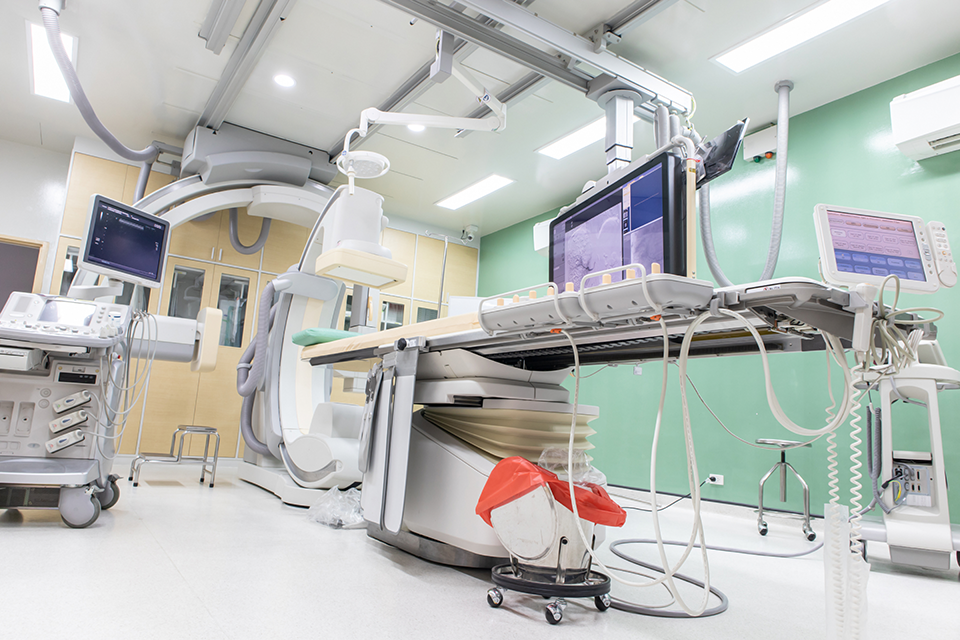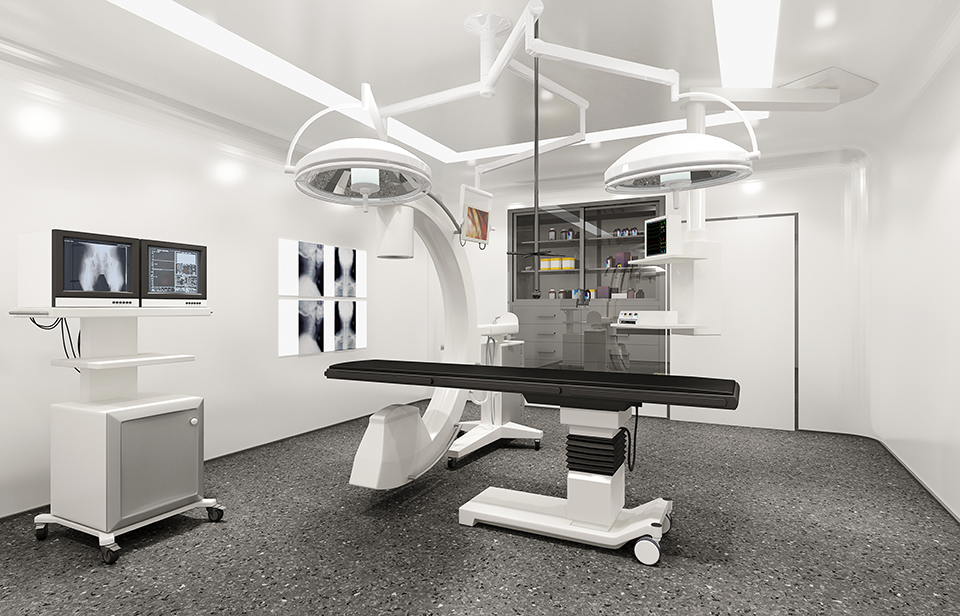IGT Challenges (and Solutions) for Hospital Administrators, Part 4: Justifying and Funding IGT
This is Part 4 in our series on IGT challenges and solutions for hospital administrators. Part 1 introduced the importance of image-guided therapy...
4 min read
Domico Med-Device August 15, 2023
Image-guided therapy is revolutionizing healthcare through improved patient experiences, better clinical outcomes, and greater staff efficiency – all while yielding higher returns on investment. The global IGT market is expected to grow from $5.42 billion in 2022 to $8.9 billion by 2023, driven by the widespread adoption of cutting-edge imaging technologies.
Where having IGT equipment such as MRIs, CT, fluoroscopy, and 3D imaging systems was once a selling point that attracted patients, it’s now expected, ingrained, and necessary. IGT is central to everything many hospital departments do.
Though IGT is an expected and necessary part of modern treatment, hospital administrators still face challenges in justifying, funding and efficiently utilizing IGT equipment. This series offers an overview of IGT in modern hospitals and reveals how hospital administrators can overcome common IGT challenges.
Image-guided therapy offers four distinct benefits for modern medicine.
IGT enables caregivers to deliver more precise, less invasive care. For example, a surgeon can obtain a 3D image of a tumor and remove it with minimal damage to healthy tissue.
 This level of precision not only results in fewer repeat procedures and readmittances but also translates into shorter hospital stays for patients. With IGT, recovery times are significantly faster, allowing individuals to return to their daily lives sooner. Moreover, the reduced risks of complications associated with more traditional procedures make a compelling case for the widespread adoption of image-guided therapy.
This level of precision not only results in fewer repeat procedures and readmittances but also translates into shorter hospital stays for patients. With IGT, recovery times are significantly faster, allowing individuals to return to their daily lives sooner. Moreover, the reduced risks of complications associated with more traditional procedures make a compelling case for the widespread adoption of image-guided therapy.
Furthermore, in certain cases, caregivers can perform multiple procedures during the same surgery, streamlining the overall interventional process and expediting the healing journey for patients. This innovative approach not only enhances the efficiency of medical interventions but also contributes to improved patient outcomes and satisfaction.
The benefits of accurate and less invasive procedures facilitated by image-guided therapy extend far beyond just reducing trauma, minimizing incisions, and speeding up recovery times. Patients undergoing IGT can also experience a higher likelihood of same-day discharges, leading to a smoother transition back to their daily lives. The enhanced safety and comfort provided by IGT procedures instill a sense of confidence in patients, knowing that their healthcare team has a clear view of internal structures and can make informed decisions for their well-being.
Moreover, image-guided therapy opens the door to innovative treatment options that were previously out of reach. By utilizing advanced imaging technologies, caregivers can explore cutting-edge therapies that offer tailored solutions to individual patient needs, revolutionizing the landscape of healthcare.
 In addition to these advantages, IGT significantly enhances patient safety and comfort through the use of specialized patient interface products. Table pads, straps, and arm boards play a crucial role in preventing accidents like slips, falls, and pressure injuries during lengthy procedures, ensuring that patients remain securely positioned for the duration of their treatment. This focus on patient well-being not only improves the overall experience but also contributes to better outcomes and satisfaction levels.
In addition to these advantages, IGT significantly enhances patient safety and comfort through the use of specialized patient interface products. Table pads, straps, and arm boards play a crucial role in preventing accidents like slips, falls, and pressure injuries during lengthy procedures, ensuring that patients remain securely positioned for the duration of their treatment. This focus on patient well-being not only improves the overall experience but also contributes to better outcomes and satisfaction levels.
With image-guided therapy at the forefront of modern healthcare, hospitals are experiencing a transformation in operational efficiency and staff productivity. The ability to quickly convert a hybrid OR or imaging suite from one procedure to another not only saves valuable time but also ensures that patients receive prompt and effective care.
Furthermore, the thoughtful design of IGT attachments and accessories plays a crucial role in streamlining patient positioning, allowing for swift and safe procedures. This attention to detail not only enhances the patient experience but also contributes to better clinical outcomes.
By leveraging image-guided therapy, hospitals can significantly reduce procedural and lab times, ultimately increasing their capacity to serve more patients on time. This efficient use of resources not only benefits patients by reducing wait times but also optimizes staff productivity, leading to a more streamlined and effective healthcare system.
 4. Greater ROI
4. Greater ROIFurthermore, the implementation of image-guided therapy not only enhances patient care but also significantly impacts the financial success of hospitals. By maximizing the use of cutting-edge imaging technologies, hospitals can accommodate a higher volume of patients and perform a greater number of procedures in a shorter amount of time. This increased efficiency not only benefits patients by reducing wait times and improving access to care but also contributes to the overall revenue generation of the medical facility.
Moreover, the trust and reputation that hospitals build through the successful utilization of image-guided therapy play a crucial role in influencing where patients choose to seek treatment. Patients are more likely to opt for healthcare institutions that offer advanced and precise medical interventions, ultimately leading to a positive impact on the hospital's bottom line.
Additionally, by optimizing the use of space and resources through the integration of IGT equipment, hospitals can improve their overall efficiency and operational effectiveness. This streamlined approach not only enhances patient outcomes and experiences but also drives financial success by maximizing the return on investment in image-guided therapy.
In summary, the integration of image-guided therapy not only elevates the standard of patient care but also serves as a significant revenue driver for hospitals, reinforcing its importance and necessity in modern healthcare settings.
 As image-guided therapy continues to advance, hospitals are on the cusp of a technological revolution that promises to reshape healthcare delivery. The integration of artificial intelligence (AI) into IGT equipment will empower caregivers to analyze complex data in real time, aiding in the decision-making process for optimal patient care. By harnessing the power of AI, healthcare providers can leverage predictive analytics and personalized treatment plans to enhance patient outcomes and streamline clinical workflows.
As image-guided therapy continues to advance, hospitals are on the cusp of a technological revolution that promises to reshape healthcare delivery. The integration of artificial intelligence (AI) into IGT equipment will empower caregivers to analyze complex data in real time, aiding in the decision-making process for optimal patient care. By harnessing the power of AI, healthcare providers can leverage predictive analytics and personalized treatment plans to enhance patient outcomes and streamline clinical workflows.
Moreover, the integration of augmented reality (AR) into IGT systems will usher in a new era of precision medicine. By transcending traditional 2D imaging, AR technology enables caregivers to visualize and interact with 3D (and even 4D) representations of internal structures with unparalleled accuracy and minimal invasiveness. This groundbreaking innovation not only enhances the precision and efficiency of medical interventions but also offers new possibilities for personalized treatment approaches tailored to each patient's unique anatomy and condition.
While these advancements hold immense promise for the future of healthcare, they also present challenges for hospital administrators. The adoption of AI and AR technologies requires significant investment in training, infrastructure, and resources to ensure seamless integration and optimal utilization. Hospital leaders must navigate these complexities to unlock the full potential of image-guided therapy and deliver cutting-edge care to their patients.
In the face of these challenges, hospital administrators must proactively seek innovative solutions and strategic partnerships to navigate the evolving landscape of IGT technology. By embracing change, investing in training programs, and optimizing their facilities to accommodate advanced imaging systems, hospitals can position themselves at the forefront of healthcare innovation and drive positive outcomes for both patients and providers.
As hospitals embark on this exciting journey toward the future of image-guided therapy, the key lies in embracing technological advancements and fostering a culture of continuous learning and adaptation. By staying ahead of the curve and leveraging the power of AI and AR, healthcare institutions can revolutionize patient care, enhance clinical outcomes, and pave the way for a new era of precision medicine.
Discover hospital administrator challenges and solutions for meeting IGT demand in Part 2 of this series.

This is Part 4 in our series on IGT challenges and solutions for hospital administrators. Part 1 introduced the importance of image-guided therapy...

This is Part 3 in a 4-part series on hospital administrator IGT challenges and solutions. Part 1 offered an overview of IGT in the modern hospital.

This is Part 2 in a 4-part series on hospital administrator IGT challenges and solutions. Part 1offered an overview of IGT in the modern hospital....